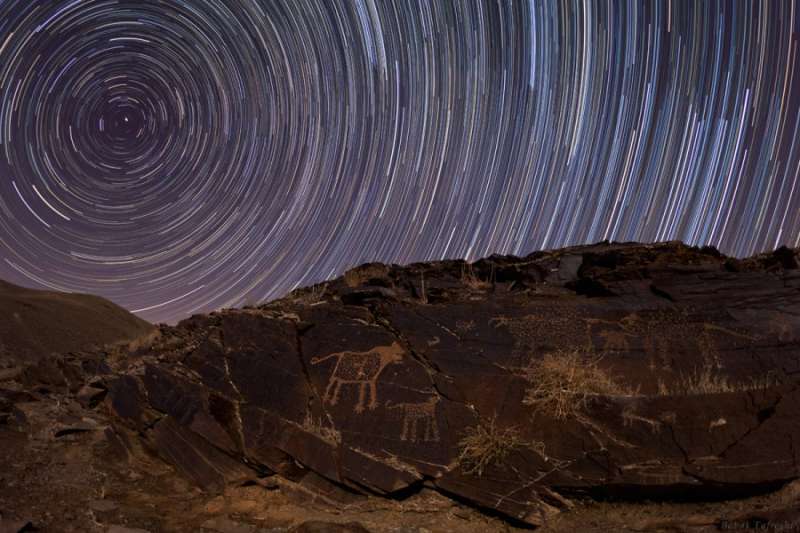
|
Credit & Copyright: Babak Tafreshi
(TWAN)
Explanation:
Engraved in rock, these ancient
petroglyphs are
abundant in the Teimareh valley,
located in the Zagros Mountains of central Iran.
They likely
tell
a tale of hunters and animals
found in the middle eastern valley 6,000 years ago or more, etched
by artists in a prehistoric age.
In the night sky above are star trails etched by
the rotation of
planet Earth during the long composite exposure made with a modern
digital camera.
On the left, the center of the star trail arcs is the
North Celestial Pole (NCP),
the extension of Earth's axis into space, with
Polaris, the North Star, leaving the bright,
short, stubby trail closest to the NCP.
But when these petroglyphs were carved, Polaris would have
made a long arc through the night.
Since the Earth's rotation axis
precesses
like a wobbling top, 6,000 years ago the NCP was near the border of
the constellations Draco and Ursa Major,
some 30 degrees from its current location in
planet Earth's sky.
|
January February March April May June July August September October November December |
| |||||||||||||||||||||||||||||||||||||||||||||||||||||||
NASA Web Site Statements, Warnings, and Disclaimers
NASA Official: Jay Norris. Specific rights apply.
A service of: LHEA at NASA / GSFC
& Michigan Tech. U.
Based on Astronomy Picture
Of the Day
Publications with keywords: star trail
Publications with words: star trail
See also:
